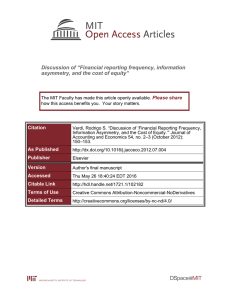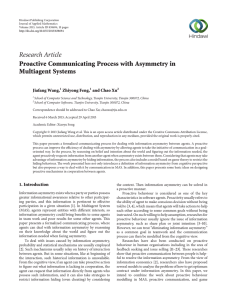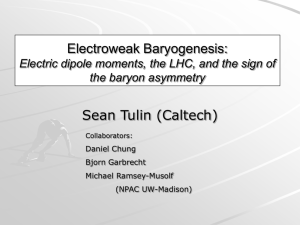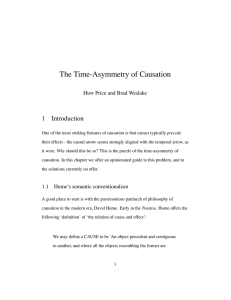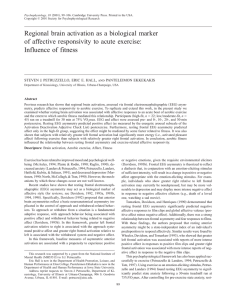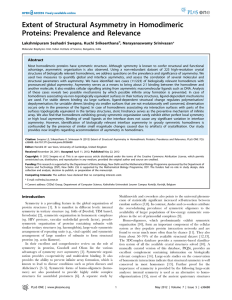Left Brain / Right Brain: Understanding Cerebral Asymmetry
advertisement
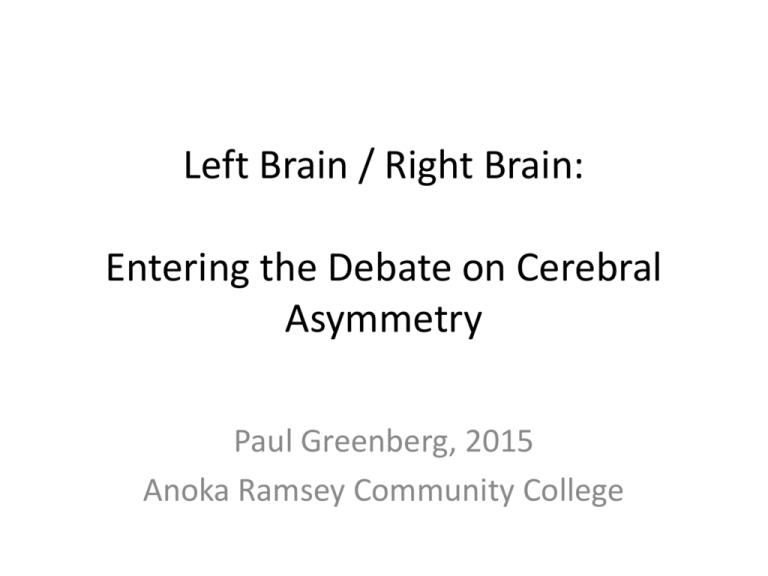
Left Brain / Right Brain: Entering the Debate on Cerebral Asymmetry Paul Greenberg, 2015 Anoka Ramsey Community College The Left vs. Right Controversy • No, the other controversy. – http://cercor.oxfordjournals.org/conte nt/11/9/868.full (Watkins et.al, 2001) • How different are different parts of the brain? Presentation Goals • Approach the Cerebral Asymmetry Debate – What is a brain/cortex? – Main issues • • • • • History of debate Structural evidence Functional evidence How methods matter Popular vs. Scientific usage Selective Origins of Cerebral Asymmetry 225 Years of Inquiry • Phrenology (less correct) – Franz Gall & Johann. Spurzheim, 17901820 – Skull features show functional localization (1/2 wrong) • Functional localization (more correct) – Brain damage shows functional localization – Paul Broca 1860s (speech) – Carl Wernicke 1870s (listening) – Supports Funct. Loc. And C. A. Structural Asymmetry • Premise: structural asymmetry predicts functional asymmetry • Famous discoveries – Visual System is Crossed – Motor System is Crossed (and Handedness) – R. Sperry (Split Brain) – Gray Matter Volume: • More in Right frontal lobe • More in Left occipital lobe • Asymmetry exists Functional Asymmetry / Dominance Left Right Argued Language (speech, grammar, syntax) Language (rhythm, sound) RH for general emotion, or divided emotion Positive Emotion Negative Emotion, Reading Emotion Creativity, Personality Types - Popular Myths Narrow Focused Attention Global Vigilant Awareness, Spatial Coordinates Role in Pathology, Indiv Differences Tools & Machines Metaphor, Context, Implicit Meaning, Living Objects RH Prosocial LH Antisocial Methods • Neuropsychology – Brain Damage – Cognitive Testing • Neurosurgery (Sperry) – Split Brain • Imaging, Electrophysiology, cellular/molecular, neuroanatomy and more Conclusion • Cerebral asymmetry well established – Structural – Functional • Varying methods and interpretations – Relation to psychopathology • Popular overgeneralizations are prevalent – Keep Reading! Iain McGilchrist https://www.youtube.com/watch?v=dFs9WO2B8uI References • Demaree, H. a, Everhart, D. E., Youngstrom, E. a, & Harrison, D. W. (2005). Brain lateralization of emotional processing: historical roots and a future incorporating “dominance”. Behavioral and Cognitive Neuroscience Reviews, 4(1), 3–20. http://doi.org/10.1177/1534582305276837 • Fitzakerley, J. (2015, January 1). Lateralization of Cortical Function. Retrieved March 27, 2015. http://www.d.umn.edu/~jfitzake/Lectures/DMED/SpeechLanguage/CorticalS_LAreas/Lateralization.html • Hecht D (2014). Cerebral lateralization of pro- and anti-social tendencies. Experimental Neurobiology , 23(1):1-27 • Hervé, P.-Y., Zago, L., Petit, L., Mazoyer, B., & Tzourio-Mazoyer, N. (2013). Revisiting human hemispheric specialization with neuroimaging. Trends in Cognitive Sciences, 17(2), 69–80. http://doi.org/10.1016/j.tics.2012.12.004 • Kolb, B., & Whishaw, I. Q. (2009). Fundamentals of human neuropsychology. New York, NY: Worth Publishers. • Nielsen, J. a, Zielinski, B. a, Ferguson, M. a, Lainhart, J. E., & Anderson, J. S. (2013). An evaluation of the left-brain vs. right-brain hypothesis with resting state functional connectivity magnetic resonance imaging. PloS One, 8(8), e71275. http://doi.org/10.1371/journal.pone.0071275 • Van Whye, J. (1999, January 1). What did phrenologists actually do? Retrieved March 27, 2015.http://www.historyofphrenology.org.uk/overview.htm • Watkins, K. (2001). Structural Asymmetries in the Human Brain: A Voxel-based Statistical Analysis of 142 MRI Scans. Cerebral Cortex, 11(9), 868-877.
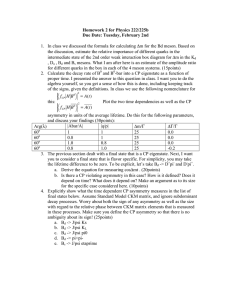

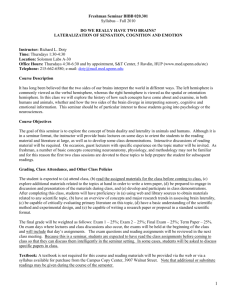
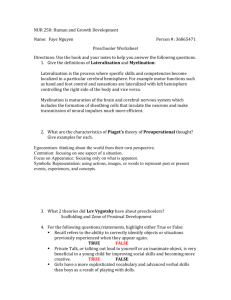
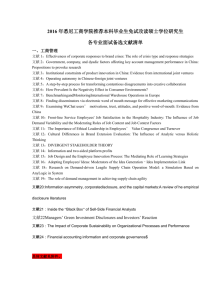
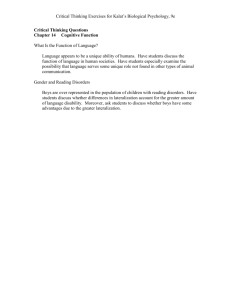
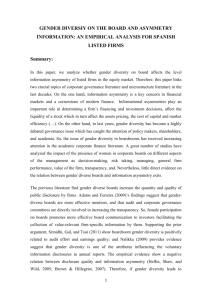
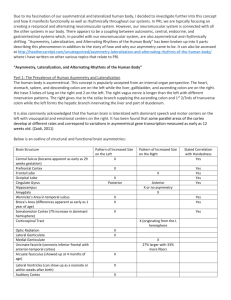
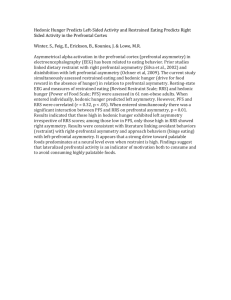
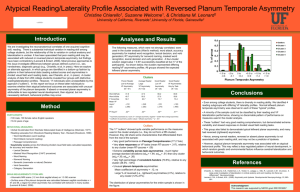
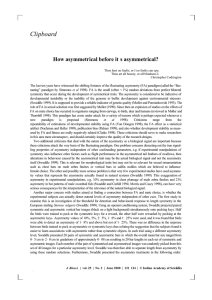
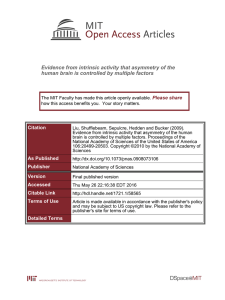
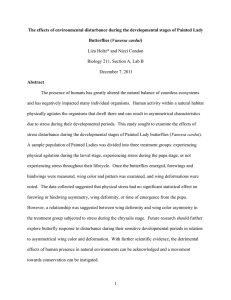

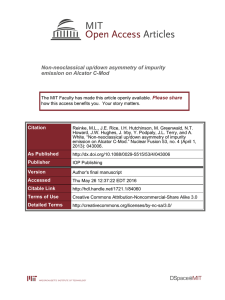
![Measurement of the leptonic asymmetry in t[¯ over t]](http://s2.studylib.net/store/data/012112288_1-860baba0d8cbeb11b428e1677caef07c-300x300.png)
